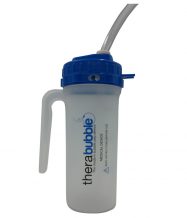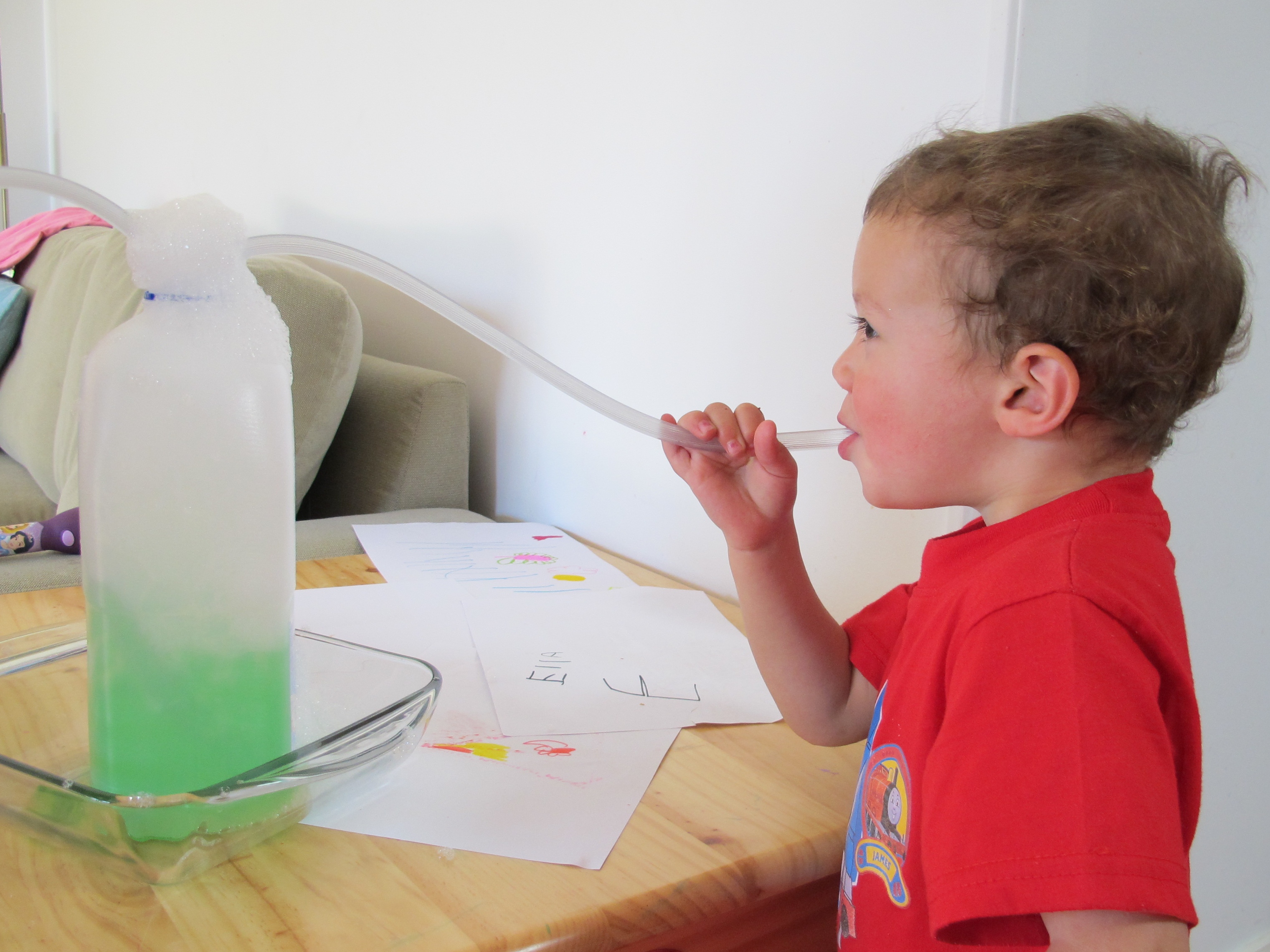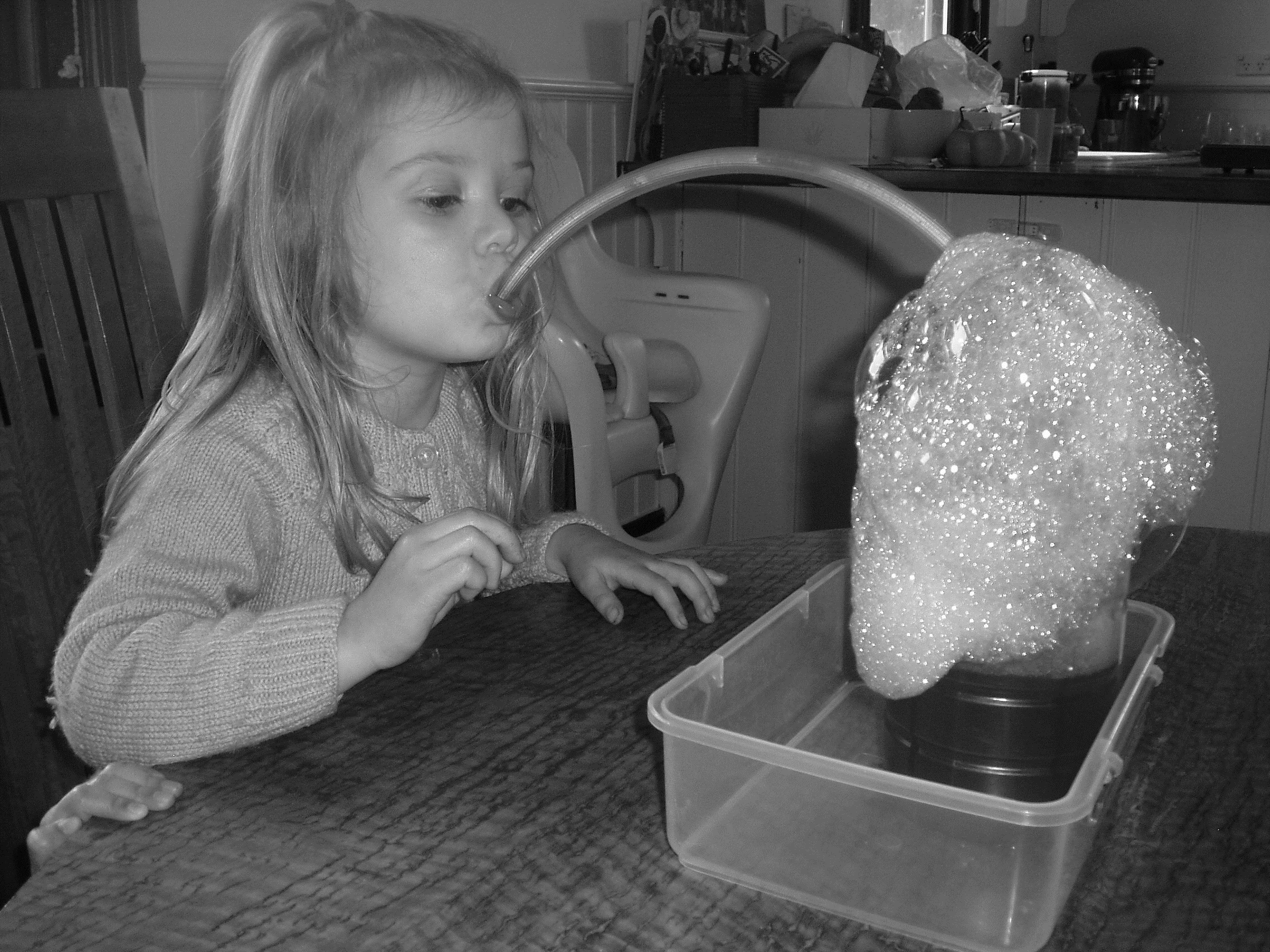Oscillating PEP using Bottle PEP
Oscillating PEP using Bottle PEP
As per adult explanation (see OscPEP using bottle PEP section)
Bottle PEP is an appropriate introduction to active positive expiratory pressure therapy for young children
It is seen as an enjoyable, yet very effective technique
Commercially available bottle PEP systems may incorporate a valve to prevent sucking of water and ensure safety in younger children – for example, Therabubble® (Fig 2).



For information on where to purchase a Therabubble device – see the Resources section.
Prescription of the Bottle PEP technique?
Bottle PEP is performed in a sitting position
Supervision is required for younger children using this technique
The bottle is filled to approximately 7-10cm of water (plus bubbles or food colouring for coloured bubbles (Fig.1)
Place the bottle into a tray or bowl in case there is any overflow of bubbles
A slightly bigger breath than normal is used in breathing out to enable the bubbles to rise
Initially one may let the toddler/child blow as many times as they wish to see that they are creating bubbles and keeping them engaged. Once they have mastered the blowing, a more formal number of breaths and sets can be instructed.
Incorporate huffing and coughing into the session (see paediatric FET section)


Ideas for Bottle PEP:
Play games with the bubble after they have been blown
Make a volcano and dinosaurs (or any creatures) can play in it
Put paper animals into the bubble mixture and try to ‘bubble’ them out
Make bubble beards or huff/blow the bubbles around
Include siblings/friends/carer and have their own set up and see who can make the biggest bubble mountain
If the toddler/child has difficulty staying on task, then do an activity between sets e.g. do 5 star jumps, 3 frog jumps etc
Put some food colouring into the bubbles and make bubble paintings by placing paper over the coloured bubbles that come out of the bottle

Benefits
Easy, fun and cheap technique
Can include family members or friends to participate
Disadvantages
Can be a bit messy to use and clean up
Ensure that the toddler/child does not drink the water, especially if there is bubble or food colouring in the water.
If there is a risk of drinking, purchase a Bottle PEP device with a valve (eg Therabubble® – Fig. 2 above).
Evidence for the clinical application of Bottle PEP.
There is no current and relevant literature on the use of Bottle PEP in the paediatric population. A recent study has evaluated that the height of the water in the bottle should be 5 cm for optimal mucus mobilisation (Mueller et al, 2014).








